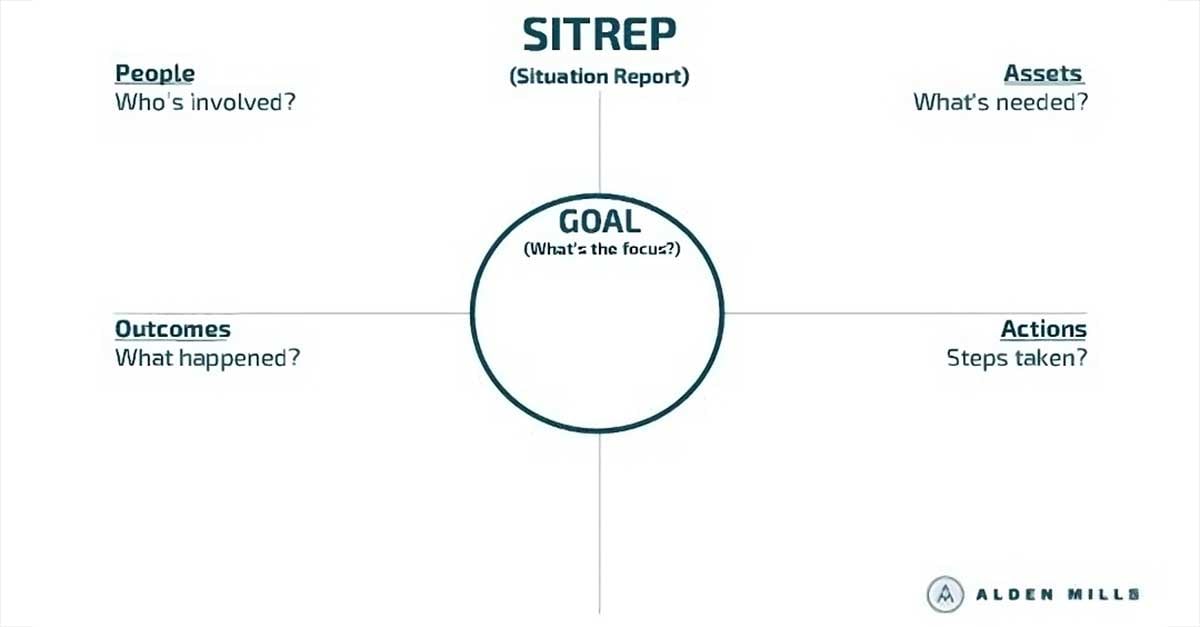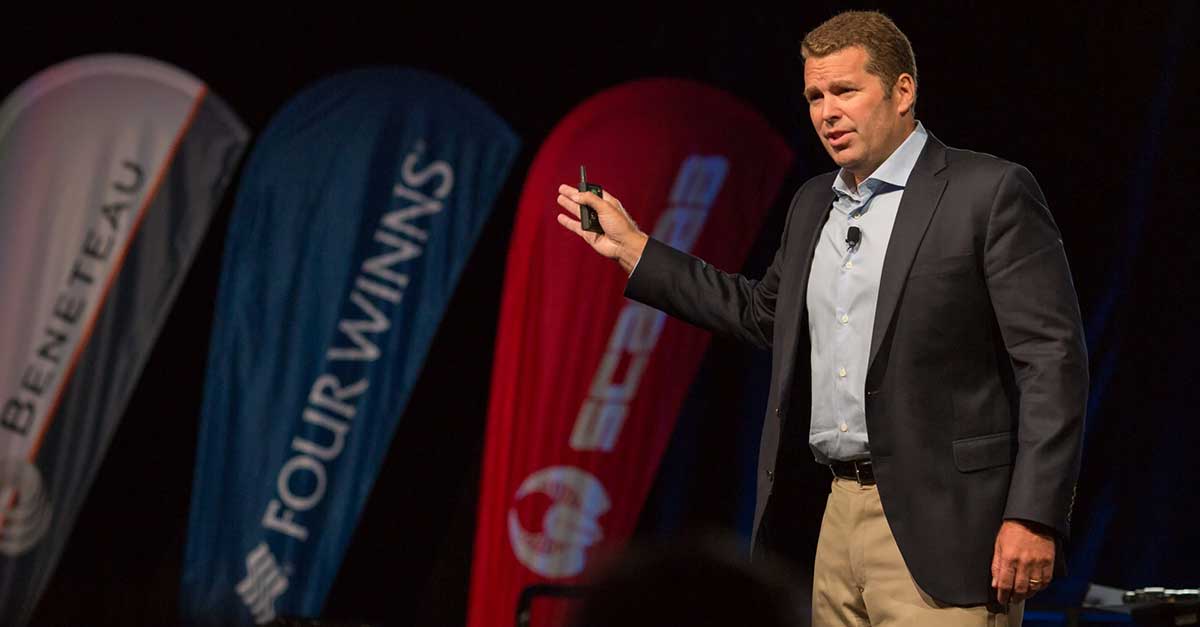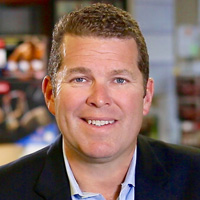With over three decades of diverse leadership experience spanning sports, the military, business, nonprofits, and community action groups, I firmly believe that the keys to success are universal. It all starts with self-leadership and culminates in serving others. My greatest satisfaction arises from assisting individuals, teams, and organizations in surpassing their initial expectations. My books, "Be Unstoppable" and "Unstoppable Teams," embody my unwavering commitment to helping individuals and organizations transcend their perceived limits. Similarly, my keynote speeches are crafted to inspire and motivate audiences to embrace impactful leadership methods that drive personal growth and organizational success.
Leadership can be a daunting task, requiring constant adaptation, innovation, resilience, focus, and accountability. Leaders must rise above managing tasks and create a culture of purpose-driven leadership. When individuals align their personal purpose with that of the organization, they become more engaged, passionate, and committed to achieving shared goals. In my leadership keynotes, I emphasize the importance of establishing and effectively communicating a clear purpose to drive impactful leadership development. Additionally, I integrate practical tools and time-tested techniques to assist leaders in fostering an empowering culture that motivates their team members to excel with focus, alignment, and accountability.
Maintaining Focus and Alignment: The Power of Daily Situation Reports
In the United States Navy, while operating down range (away from base), it is mandatory for the senior officer of the ship, submarine, air squadron, or in my case, SEAL platoon, to publish a daily Situation Report, also known as SITREP. This daily process serves two purposes: firstly, it keeps senior leadership informed about the daily activities that contribute towards a goal, and secondly, it enables downrange leaders to assess what is working, what is not, and what needs to be accomplished. By generating a SITREP, leaders and teammates remain focused and aligned with their objectives and purpose.
Deploying ships, submarines, aircraft, and SEALs (to name a few) all over the world is akin to managing remote employees. While the missions may differ, the actions required to achieve a goal remain the same. It is crucial for leaders to prioritize keeping their teams informed and focused, whether they are working remotely or in different offices. Over 50% of my clients (keynote speaking, offsite workshops, or coaching and training) seek tools to enhance their team's ability to succeed. Consistent use of SITREPs contributes to maintaining focus and alignment within the team.
Practical Applications and Success Stories
As an example, recently I delivered a keynote at an offsite event for a rapidly expanding tech marketing company. This company had operations spread across four different time zones, with most of their employees working remotely. Unfortunately, they had fallen into a pattern of consistently missing their quarterly targets. In fact, missing these targets had become so routine that employees referred to them as mere benchmarks or guidelines. The organization had lost a sense of urgency, and this lackadaisical attitude towards meeting their goals had permeated throughout the entire company. Frustrated investors were demanding greater accountability, while the leaders themselves were fatigued by the ongoing performance shortfalls.
The keynote they requested centered around Building Unstoppable Teams, with a particular emphasis on achieving desired results. During my presentation, I introduced them to a simplified version of the Navy's reliable Situation Report, which I call a SITREP. The aim here is to avoid getting caught up in lengthy third-person dialogue. Instead, it's about providing concise bullet points that highlight what individuals are focusing on, what they need, and the results they are generating.

Previously, management lacked a straightforward tool to maintain focus on objectives. The task of achieving these objectives becomes even more challenging when individuals are unaware or forgetful of their tasks and the purpose. The tools they previously experimented with were laborious workflow management systems. However, they now regularly implement the SITREP during weekly meetings to serve as a reminder of the mission at hand.
Keynote Speakers Empowering Organizations for Success
My speaking engagements span across a vast array of business, nonprofit, and community groups. I have been privileged to share my insights with organizations of all sizes, from Fortune 500 companies to small startups and everything in between. My message is carefully customized to resonate with each unique audience, and I have seen firsthand the transformation that can occur when teams fully embrace my frameworks and principles. Companies that were once struggling to meet their goals are now experiencing unprecedented success.
Individual leadership skills development within the three levels of leadership is at the core of team building. Keynote speeches provide valuable insights into self-awareness, emotional intelligence, decision-making, and other critical competencies. By inspiring individuals to take ownership of their professional growth, these speeches encourage them to step out of their comfort zones, embrace challenges, and continuously learn and grow. This fosters competent individuals who can assume leadership roles when needed.
However, team dynamics are equally important. Keynote speeches emphasize the power of collective effort and offer guidance on creating a collaborative environment, managing conflicts, promoting diversity and inclusion, and fostering a sense of belonging. By addressing these aspects, leaders learn how to effectively manage their teams, leverage individual strengths for collective success, and create a supportive, inclusive environment that promotes innovation and productivity.
By balancing individual leadership skills development and team dynamics, keynote speeches create a holistic approach to leadership development. This recognizes that individual competencies must be effectively channeled within a team context to drive organizational success. It also fosters a culture where everyone feels valued and empowered, leading to increased engagement, job satisfaction, and productivity. This approach prepares leaders not only to lead but also to collaborate, adapt, and thrive in a constantly changing business landscape.
The Impact of Keynote Speakers in Leadership Development
Keynote speakers have a profound impact on effective leadership development, playing a pivotal role in shaping it. Drawing from my extensive leadership experience across diverse fields, I have witnessed the transformative power of aligning individual skills with team dynamics. Successful leadership lies in maintaining focus, alignment, and accountability, principles exemplified by the Navy's Situation Reports (SITREPs).
The practical application of these principles is evident in success stories, like the tech marketing company that improved its performance by adopting a simplified version of SITREPs. This tool not only enhanced objective focus but also served as a reminder of the mission during weekly meetings. The transition from laborious workflow management systems to concise, purpose-driven communication has proven to be a catalyst for achieving desired results.
Tailored speaking engagements empower organizations for success by addressing individual leadership skills and team dynamics, resonating with diverse audiences. By inspiring individuals to take ownership of their growth and emphasizing collaborative efforts, keynote speakers foster a holistic approach to leadership development. This balanced focus equips leaders with the skills to navigate the changing business landscape, promoting engagement, job satisfaction, and productivity.
The journey to effective leadership is a collective one, where individual competence merges seamlessly with collaborative teamwork. Leadership keynote speakers serve as catalysts for this integration, creating a culture where leaders not only lead but also collaborate, adapt, and thrive. Through this holistic approach, organizations can truly achieve sustained success in a dynamic and ever-evolving business environment.

